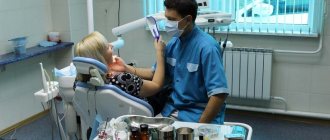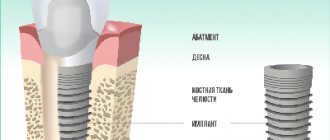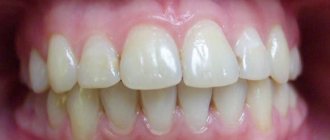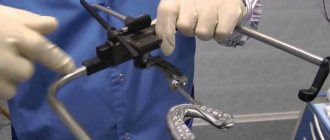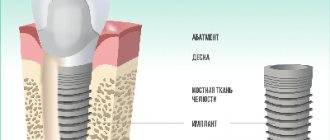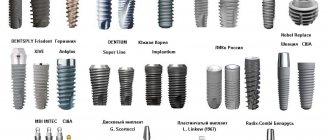An orthopedic traumatologist is a specialist involved in the diagnosis, treatment and prevention of diseases and injuries of the musculoskeletal system. Inflammatory processes, deformations, consequences of injuries - all this is included in the scope of his activity. If you need a consultation with a good orthopedic traumatologist, make an appointment at the Health Workshop clinic in St. Petersburg. Specialists are ready to examine each patient directly at the medical center and come home or work to provide assistance.
The Health Workshop clinic employs orthopedists with over 12 years of experience who regularly improve their skills through courses and master new methods of diagnosis and treatment. We take on the most severe cases of arthrosis, arthritis and other diseases.
What diseases does a traumatologist-orthopedist work with?
An orthopedist-traumatologist treats the following diseases:
- acute and chronic joint pathology: arthritis, bursitis, arthrosis, gout, autoimmune lesions;
- all types of flat feet;
- postural disorders and changes in the shape of the spinal column (kyphosis, scoliosis, lordosis);
- osteochondrosis of any localization;
- malignant and benign bone tumors;
- injuries and their consequences (closed and open fractures, dislocations, subluxations, bruises, sprains, ruptures and other damage to ligaments, animal bites);
- osteomyelitis (bone inflammation);
- osteoporosis (loss of bone tissue and its increased fragility, up to partial destruction of the tissue).
Soft tissue restoration
Soft tissue includes tissues that connect, support, or surround other structures and organs of the body, other than hard tissue such as bone. Soft tissues include tendons, ligaments, fascia, skin, fibrous tissue, fat, and synovial membranes (which are connective tissue), as well as muscles, nerves, and blood vessels. Soft tissue injury is damage to the ligaments, muscles and tendons of the hip, knee, shoulder and elbow. Soft tissue damage usually occurs from strain, sprains and repeated use of a particular body part, and can lead to swelling, pain, bruising and loss of function. To treat a soft tissue injury, orthopedic doctors use a soft tissue reconstruction procedure.
When is an appointment with an orthopedist required?
It is necessary to consult a specialist as soon as possible if the following symptoms appear:
- pain in one or more joints, stiffness, excessive crunching, change in shape;
- redness, swelling of the joint and other signs of the inflammatory process;
- acute or chronic pain in any part of the musculoskeletal system, including during physical activity and heavy lifting;
- muscle weakness, increased fatigue;
- postural disorders: curvatures in the cervical, thoracic, lumbar spine;
- general body stiffness in the morning;
- suspicions of violation of the integrity of bones, ligaments, soft tissues, dislocations;
- aches, discomfort in the body due to changing weather.
A timely visit to a specialist doctor will help identify problems at an early stage of development and take truly effective measures.
Arthroscopy
Arthroscopy is a minimally invasive joint surgery using an arthroscope, an endoscope that is inserted into the joint through a small incision, a procedure that examines and sometimes treats the injury. Its advantage over traditional open surgery is that the joint does not have to be completely open. This benefit reduces recovery time and may increase the success rate due to less trauma to the connective tissue. It has gained popularity due to evidence of faster recovery time with less scarring due to smaller incisions. The word arthroscopy comes from two Greek words, “arthro” (joint) and “skopein” (to look). The term literally means "to look into the joint." Arthroscopy has many types and is used to treat many parts of the body. These types of arthroscopy are more popular among patients: knee, hip, shoulder, wrist, spine, temporomandibular joint.
Appointment and consultation with an orthopedist at the Health Workshop
An appointment with a traumatologist-orthopedist at the Health Workshop in St. Petersburg begins with a detailed study of complaints and medical history. The specialist finds out the specific symptoms that forced the person to seek help: where it hurts and how badly, under what circumstances the symptoms arose, etc. The traumas suffered, chronic and acute pathologies, and the presence of similar problems in relatives are clarified.
The next stage of consultation is an examination, including:
- assessment of the condition of the spine, posture, identification of deformities;
- checking the severity and symmetry of reflexes;
- observation of gait, features of the limbs;
- assessment of joint function: amplitude of flexion and extension, circular movements, etc.;
- identifying areas of maximum pain, swelling, etc.
Methods of diagnosis and treatment by an orthopedist
In most cases, a routine examination is not enough to establish an accurate diagnosis. The doctor prescribes examinations to confirm or exclude specific pathologies. Depending on the symptoms, the following are used:
- X-ray, computed tomography: necessary for visualizing bones and joints, detecting fractures, cracks, dislocations, subluxations, congenital anatomical defects, osteoarthritis;
- MRI: allows you to evaluate the condition of not only bone tissue, but also periarticular structures: cartilage, muscles, ligaments, nerves, blood vessels, lymph nodes, soft tissues;
- Ultrasound: imaging using ultrasound waves; used to quickly identify joint damage and inflammation;
- osteoscintigraphy: administration of blood isotopes to identify malignant tumors, metastases, foci of inflammation;
- arthroscopy: puncture of the joint with the introduction of a miniature video camera for examination from the inside; very effective, in particular, for injuries of the knee, especially its menisci;
- diagnostic puncture: allows you to take joint fluid for analysis and identify the presence of pathological contents;
- bone biopsy: necessary to diagnose skeletal tumors;
- laboratory tests: general blood and urine tests, blood biochemistry with assessment of the level of uric acid, C-reactive protein and other indicators.
If necessary, consultations with related specialists (surgeons, neurologists and others) and additional examination methods are prescribed.
Depending on the diagnosis, orthopedists use the following treatment methods:
- drug therapy: painkillers, drugs for restoring cartilage tissue, suppressing the immune system, etc.;
- physical therapy: allows you to strengthen the muscle corset, develop joints and restore mobility after injuries;
- massage: relieves muscle spasms, relieves pain, improves metabolism;
- physiotherapy: improves blood circulation, stimulates tissue regeneration, relieves pain;
- immobilization: applying plaster casts, using corsets, orthoses, bandages reduces the load on the damaged area;
- surgical treatment: prescribed when drugs and physical procedures are ineffective or inappropriate, for example, if it is impossible to reduce a fracture, bone osteosynthesis is performed;
Joint replacement/implant replacement
Replacement arthroplasty, or joint replacement surgery, is an orthopedic surgery procedure in which an arthritic or dysfunctional joint surface is replaced with an orthopedic prosthesis. When severe joint pain or dysfunction is not relieved by less invasive treatments, joint replacement is considered treatment by orthopedic doctors. Joint replacement is used for many joint pains such as shoulder, hip, knee, ankle and finger. The prosthetic material used in joint replacement surgeries can be metal, ceramic or alloy. Some ceramic materials commonly used in joint replacement are aluminum oxide, zirconia, silica, hydroxyapatite, titanium nitride, and silicon nitride. Orthopedic surgeons decide which material should be used.
Prices for basic services of a traumatologist-orthopedist
As part of the current promotion, initial and repeat appointments with an orthopedist at the Health Workshop are free for the patient. The price for inspection and issuing appointments at home starts from 3,000 rubles and depends on the distance and occasion.
Within the walls of the clinic you can not only get advice from experienced specialists, but also undergo the necessary medical procedures that will help quickly relieve pain and alleviate the condition. At your service:
- joint puncture (diagnostic or therapeutic): from 1900 rubles excluding the cost of drugs;
- drug blockades: from 5,300 rubles, depending on the location of the pain.
You can find out how much it costs to see an orthopedist and other doctors, and check the current prices for all services of our clinic in the “Prices and Promotions” section, as well as by phone.
Important personal qualities
A good doctor involved in orthopedic surgery is an intelligent, well-rounded and physically strong person. It is believed that the profession is more suitable for representatives of the stronger sex, because the working tools of an orthopedic surgeon are chisels, hammers and other heavy materials. inventory. But this judgment is erroneous, because girls become excellent prosthetists, superbly adjust joints, perform the most complex operations, working no worse than men.
The main character traits of this doctor include:
- good physical fitness;
- moral stability;
- endurance;
- concentration;
- the ability to control your emotions;
- communication skills;
- tolerance.
Every day, an orthopedic surgeon works with patients suffering from severe injuries and complex fractures, so the doctor must have strong nerves and a tough character.
Our advantages
“Health Workshop” is a modern multidisciplinary treatment and diagnostic center that provides qualified medical care to adult patients. Diseases of the musculoskeletal system and joints, nervous and cardiovascular systems - we work in various areas. If you are concerned about back or joint pain, or if you need to recover from an injury or surgery, make an appointment with our orthopedic traumatologists. Consultations are conducted by leading specialists, many of whom are candidates of medical sciences, have the highest qualification category and extensive experience. On an outpatient basis, patients are seen by the head of the traumatology department and the chief physician of the clinic. Each visitor has access to:
- modern methods for diagnosing pathologies of the musculoskeletal system, including MRI, ultrasound, densitometry, functional studies and others;
- comprehensive diagnostic programs aimed at a general assessment of the body’s condition, search for specific diseases and their complications;
- individual selection of drug treatment;
- a large selection of physiotherapeutic procedures using high-quality equipment: resonant wave UHF therapy, shock wave therapy, laser and ultrasound, MMVT and others;
- massage and exercise therapy according to individual indications;
- effective methods for quick relief from pain: blockades, therapeutic droppers, intra-articular administration of drugs;
- kinesiotaping and various types of kinesiotherapy;
- rehabilitation after injuries using the Thera-Band simulator;
- hirudotherapy;
- manual therapy;
- the opportunity to order and purchase comfortable orthopedic insoles that help with pain in the pelvic bones, knees, feet, ankles;
- acupuncture and many other therapeutic and preventive procedures.
Our orthopedists will find an approach to solving any problem with the musculoskeletal system. Call and sign up for a free consultation now.
Internal fixation and orthopedic implants
Internal fixation is an orthopedic procedure that involves the surgical placement of orthopedic implants to restore bone. This procedure uses an internal fixator, which can be made of stainless steel, titanium alloy, or cobalt-chromium alloy. These fasteners come in three main types:
- Plate and screws
- Kirchner Wires
- Intramedullary Nails Internal fixation procedures are performed in two ways: open repair internal fixation (ORIF) and closed repair internal fixation (CRIF). Open reduction here refers to open surgery to set the bones needed for some fractures. Internal fixation here refers to the fixation of screws and/or plates, intramedullary rods and other devices to enable or facilitate healing. Closed reduction internal fixation (CRIF) is a reduction without any open surgery followed by internal fixation.



